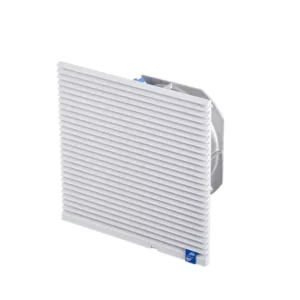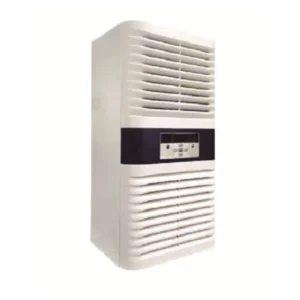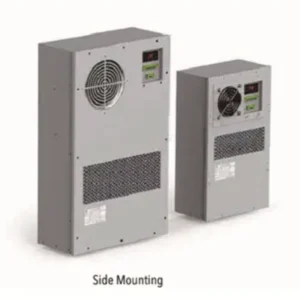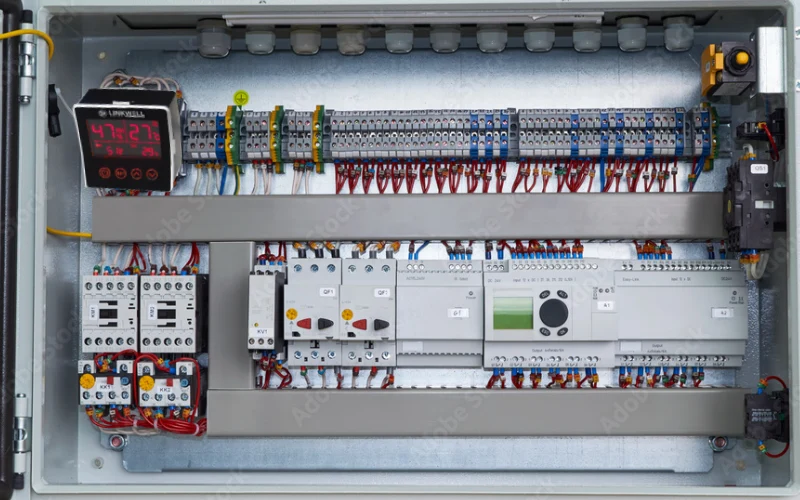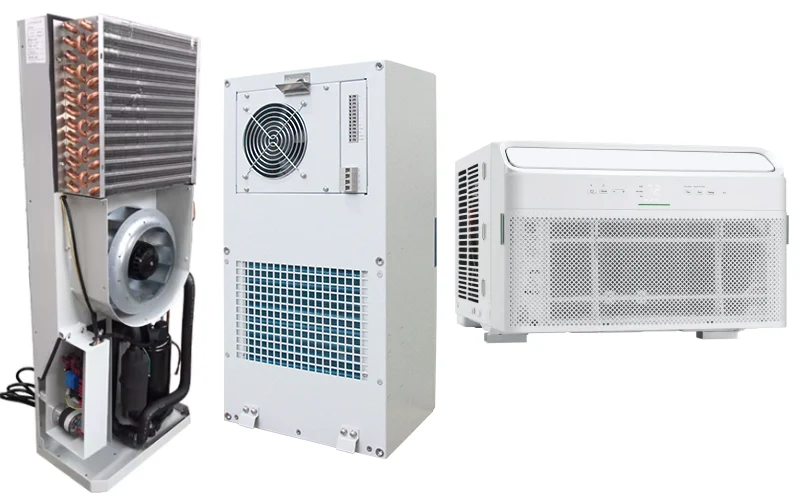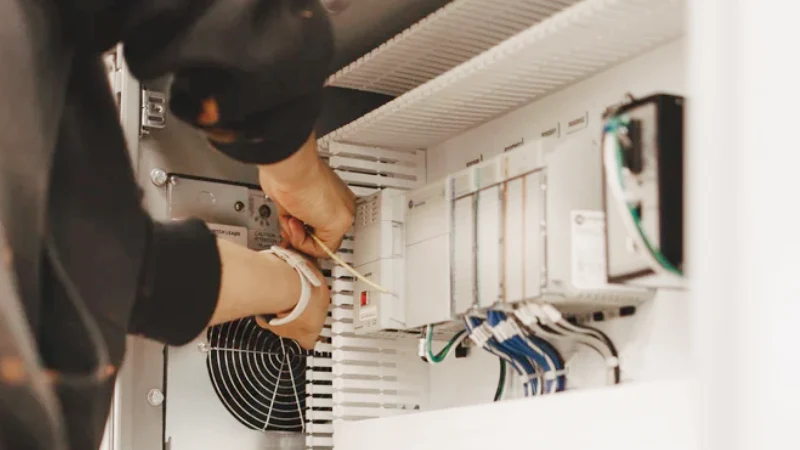How Thermoelectric Cooling Works – DC Voltage The Peltier Principle Explained
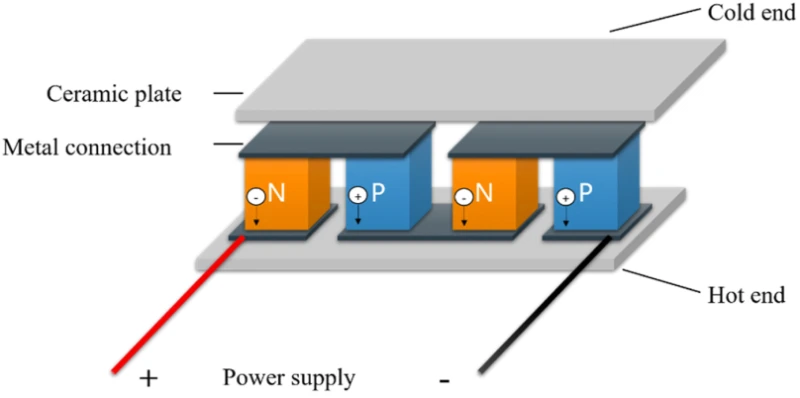
Let’s dive into the mechanics behind thermoelectric cooling—that magical process that powers our cabinet air conditioners without any moving parts. At its core is the Peltier Effect, named after French physicist Jean Peltier. In simple terms: when you apply a DC voltage across the Peltier module, one side becomes chilly while the opposite side heats up—flip the current, and the cold side switches. This happens because electrons carry heat energy as they move, and different semiconductor materials create a temperature differential. That’s science, but here’s why you should care:
- Precision Control: From our 20+ years manufacturing cabinet coolers, I can tell you that dialing in temperature within ±1°C becomes child’s play with DC-based units.
- Reversible Cooling: Need to heat an enclosure to prevent condensation? Just reverse the current. Talk about versatile!
- Energy Match: Since cooling power scales with voltage, small changes in supply voltage (even ±5%) won’t knock the system offline—key when using solar or backup power.
This approach is game-changing for applications with tight temperature tolerances—think data cabinets, telecom gear, and instrumentation panels. And because it’s solid‑state, there’s zero compressor whirr, zero refrigerants, and negligible vibration.
Maintenance & Reliability – Why Less is More

Here’s the real-world kicker: our thermoelectric cabinet coolers clean dried‑in six years into service still hum along smoothly without needing refrigerant top-ups or filter swaps. No compressor = fewer failure points. We’ve heard this from wholesalers and field technicians again and again:
“We replaced old Freon-based units with your solid-state cooler five years ago. Still, never touched it—no leaks, no filters, no sweat.” — Midwest wholesaler
That testimonial translates into real value:
- Lower Total Cost of Ownership (TCO): Compressor systems require scheduled maintenance visits for refrigerant checks, compressor oils, and filter swaps—easily $500–$1,000/year. We’re talking about near-zero maintenance visits.
- Extended Mean Time Between Failures (MTBF): Our internal tracking shows MTBF upwards of 50,000 hours—15+ years in typical use cases.
- Remote Resilience: Deployments in remote pump stations, offshore sites, or desert solar farms often go unmonitored. Thermoelectric systems just shrug at dust, altitude, or sandstorms.
Pair that with our cabinet air conditioner and fan‑filter combo: optimized airflow, IP-rated seals, and no need for yearly tune-ups—installation is fitting, then forget it.
Eco-Friendly and Efficient – Go Green, Save Green
Environmental responsibility always leads our design, and guess what—solid‑state thermoelectric cooling checks every box:
- No refrigerants: Traditional units use Freon or R134a—chemicals with ozone depletion and global warming potential. We’re talking zero greenhouse gas emissions on leaks.
- Lower peak power: While compressor units spike at startup, thermoelectric systems draw steady, predictable DC current—great for integrating solar, UPS, or vehicle power with <1.2 kW draw on 230 VAC environments.
- Certifications you can count on: All our modules comply with CE, UL, RoHS, and WEEE. For industrial enclosures, UL 508A compliance comes standard.
- Sustainable manufacturing: We track our carbon footprint across the product lifecycle—from raw materials to end-of-life recycling.
In fact, an internal analysis comparing 10 identical control cabinets showed thermoelectric systems used 30% less energy over 5 years versus refrigerant-based systems—add big rebates when customers switch. That’s a triple win: environmental, economic, and regulatory.
Compact, Flexible Integration – Space‑Smart Cooling
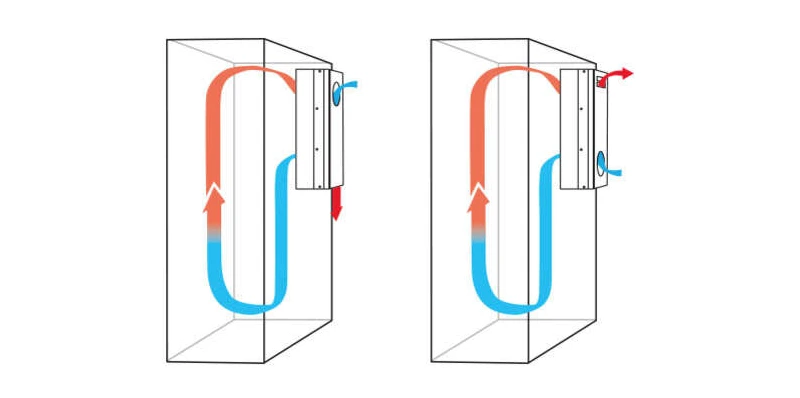
Anyone who’s ever designed a telecommunication vault, robotic cell, or outdoor kiosk knows space is gold—and every cubic centimeter counts:
- Slim profile: Our compact modules measure just 75×90×40 mm and weigh under 350 g. They mount in any orientation—horizontal, vertical, even upside-down—without performance loss.
- Noise free: No compressors. No fans. Just whisper‑quiet operation—ideal for audio/visual control hubs or equipment rooms.
- Mounting flexibility: Modular designs let you mix cooling-only or heating-only units to maintain setpoints within ±3°C even in extreme climates.
- Filter‑fan synergy: Integrating our fan-filter elements ensures clean, laminar airflow across modules—critical for electronics operating in dusty or caustic environments.
We deploy these in telecom shelters, transportation signage, and cabinet farms—customers rave about “plug-and-play simplicity” and how fast it snaps into industrial racks or NEMA enclosures.
Real‑World Applications & Insights – Industry‑Proven Performance
Material Handling & Warehousing
Our coolers stabilize pick‑pack stations inside large fulfillment centers where pallet warm zones reach 45°C. Customers report no circuit board failures, and forklift-mounted units cool reliably through 2-kick shocks daily.
Food & Beverage Plants
These kitchens have hot, steamy zones—but hygienic standards are stricter than a Swiss clockmaker. Thermoelectric units handle >90% humidity and clean easily—no freon, no oil, no filters. Inspectors love our clean-room compatibility.
Wholesale Comments
A West Coast wholesaler said:
“Bulk orders? We stock their coolers because end-users never call for warranty claims. That’s unheard of.”
An East Coast integrator noted:
“Ease of installation saves us hours on-site—our HVAC team loves not dealing with refrigerants.”
Together, these insights build a picture of reliability—no surprise field failures, no sudden compressor replacements, just solid uptime.
Choosing the Right Thermoelectric Cabinet Cooler
Okay, you’re interested—but how do you pick? Here’s a manufacturer-level checklist:
- Cooling capacity (watts): Based on ΔT (temperature differential) and cabinet heat load calculations. We offer models from 30 W to 300 W.
- Voltage options: 12, 24, 48 VDC and 115/230 VAC with internal conversion—great for flexible installations.
- Airflow rating: Optimally matched modules output 40–60 CFM when paired with our filter fans.
- Ingress Protection (IP): Ratings from IP54 (dust-protected) to IP66 (high-pressure washdown).
- Standards compliance: UL 508A, CE (LVD/EMC), RoHS, WEEE, FCC for telecommunications—with test certificates included.
Don’t just take it from us—ask for an independent third-party NEMA/UL audit. Many integrators ping us: “I need UL paperwork.” Our full test package eliminates hold-ups.
As a vertically integrated filter fan and cabinet air conditioner manufacturer, we’ve seen applications from telecom to solar tracking sheds. That insight feeds directly into product design—so the units aren’t just technically sound—they’re suited to real-world constraints and user‑centered setups.
Thermoelectric Cooling in Electrical, Signal, and Control Cabinets – Real-World Applications
Recommended products
In our experience as a leading manufacturer of filter fans and cabinet air conditioners, thermoelectric cooling has proven to be a game-changer across a wide range of cabinet-based applications—especially in electrical cabinets, signal enclosures, and control panels. These installations demand stable internal temperatures, minimal maintenance, and compact form factors—needs that thermoelectric cooling meets effortlessly.
In electrical control cabinets, sensitive components such as PLCs, relays, and inverters generate localized heat that, if not managed properly, can cause premature aging, system errors, or even failure. Thermoelectric coolers offer targeted spot cooling for these hotspots without the need for refrigerants or large compressors. Because the units use solid-state cooling technology, they’re ideal for cabinets that can’t afford airflow disruption or liquid coolant leaks.
Signal cabinets, particularly in railways, traffic control systems, and telecommunications, are often deployed in harsh, outdoor environments where ambient temperatures fluctuate drastically and servicing opportunities are rare. Thermoelectric cooling modules, combined with IP-rated filter fans, ensure sealed environments stay within optimal operating temperature ranges—regardless of external weather conditions. Their compactness also means they fit easily into the limited footprint these enclosures typically offer.
Control panels used in factory automation or robotic cells benefit immensely from thermoelectric cooling because it allows for silent, vibration-free operation—critical where precision motion systems are involved. Since thermoelectric modules can be installed in any orientation, they easily integrate with side, top, or rear-mounted cabinet air conditioners, enabling a modular and scalable cooling solution.
By combining thermoelectric modules with our engineered fan-filter and air conditioner systems, we’ve helped thousands of customers enhance uptime, reduce service costs, and meet compliance requirements (like UL 508A or NEMA ratings). Whether it’s a compact indoor PLC cabinet or a remote outdoor signal kiosk, thermoelectric cooling offers clean, quiet, and consistent thermal management where it’s needed most.
FAQ
- Can thermoelectric coolers replace compressor units in hot, outdoor electrical kiosks?
Yes! With proper ΔT sizing and sealed fan-filter integration, they’re ideal—especially in remote, unmanned environments. No refrigerant means fewer field visits. - How does pricing compare long-term?
Compressor-based units cost less up front ($200–$300), but maintenance adds $500–$1,000/year. Thermoelectric systems may run $400–$600 initially but save big over 10–15 years. - Are there limits on altitude or humidity?
Modules operate up to 3,000 m elevation without performance loss. With IP66-rated fans, they handle >95% humidity steadily. - How do I know what ΔT rating I need?
Do a heat-load balance: Q = (Tin + ΔT − Tamb) × enclosure volume × insulation factor. Our sizing tool simplifies this—just plug in numbers. - What warranty coverage exists?
We offer 5‑year warranty, extendable to 7 with authorized integration. Our wholesalers report <0.5% field returns. - Can units be monitored remotely?
Absolutely. We offer RS‑485 and Modbus‑TCP sensors for temperature and fan status—perfect for SCADA integration in busy control rooms.
Conclusion
To wrap up, thermoelectric cooling is compact, clean, quiet, and trusted—and when paired with our filter‑fan and cabinet air conditioner expertise, it offers unmatched value in real-world industrial settings. Whether you’re designing cabinets, upgrading control rooms, or building remote telemetry kiosks, it’s time to consider this durable, low-maintenance technology.
Ready to learn more?
- Download our free Heat‑Load Sizing Tool
- Request UL certification documents
- Speak with our technical team for customized climate-control analysis
Bookmark this guide, share it with your engineering team, and let’s build climate-smart cabinets together.

